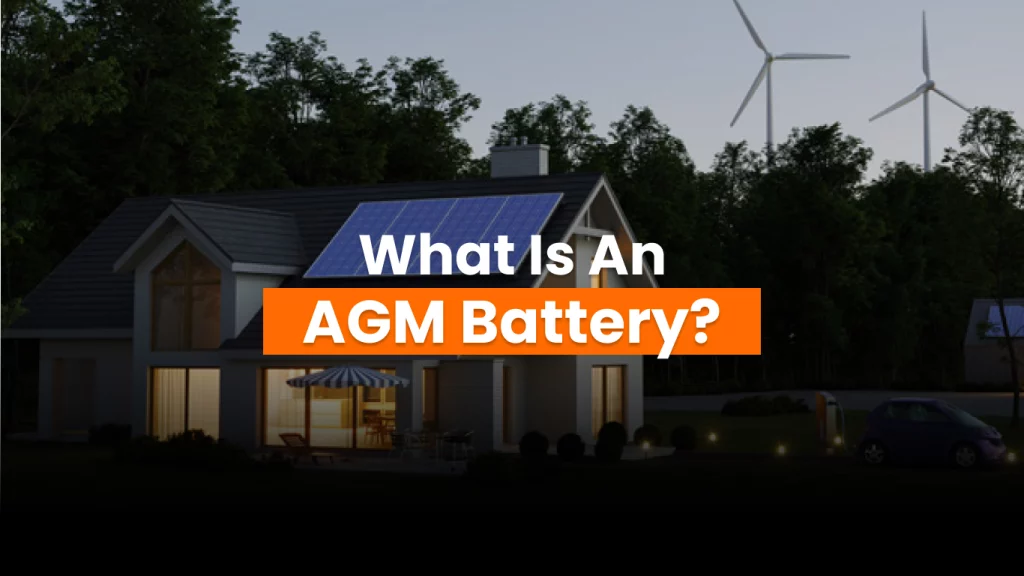An AGM battery,short for absorbed glass mat,is a sealed, maintenance‑free lead‑acid battery system. Instead of storing liquid electrolyte freely, tiny glass fiber mats absorb the acid and hold it in place. This innovative design makes AGM batteries spill‑proof, safer, and more efficient than traditional flooded lead‑acid types.
Originally developed for military and aerospace applications,where reliability, vibration resistance, and low weight were critical,AGM technology has since expanded into renewable energy, RVs, marine systems, backup power, and more.
How AGM batteries work and why they stand out
Asorbent glass mat technology
Within an AGM battery, a fiberglass mat interwoven between the lead plates soaks up the electrolyte. This keeps the acid immobilized and prevents leakage,even if the battery is tipped or mounted in unusual orientations. AGM batteries are also valve‑regulated (VRLA), which means they recombine nearly all gases internally, making them practically sealed.
Minimal maintenance
Because the sealed design retains the electrolyte, AGM batteries don’t require water top‑ups or regular checks. They retain up to 80% of their charge after six months of storage, making them ideal for seasonal use or emergency backup systems.
High performance characteristics
AGM batteries provide fast charging and deep‑cycle capability. Thanks to low internal resistance, they can handle rapid charge/discharge cycles and sustain deep discharges (commonly down to 50% capacity) without damage, making them reliable for solar and renewable energy setups. They also deliver high burst power,valuable for motor starting or heavy-duty tools.
Rugged build quality
With tightly compressed construction, AGM batteries resist shock and vibration,perfect for use in RVs, marine vessels, or mobile systems. They’re also more resilient in extreme temperatures and harsh conditions than flooded batteries.
Advantages and common applications
Advantages at a glance
- maintenance‑free sealed design: no spills, no watering, can be installed in any orientation.
- safety: low gassing, reduced acid exposure, minimal explosion risk.
- fast charging: often 2–3× quicker recharge than flooded batteries.
- deep‑cycle reliability: supports repeated discharges and recharges with minimal degradation.
- low self‑discharge: retains energy for months,ideal for backup or stored setups.
- vibration and temperature resistance: stable performance in mobile and rugged environments.
Where AGM batteries excel
AGM batteries power a wide variety of systems:
- solar and wind energy installations, where frequent deep cycles and low maintenance are essential.
- RV, marine, and off‑grid systems, especially where tilting or vibration is common.
- automotive and start/stop engines, due to high cranking amps and low internal resistance.
- UPS systems and backup power, preferred in data centers and medical facilities due to safety and reliability.
They’re also used in sensitive settings like sailplanes, military equipment, remote sensors, and indoor electric systems,thanks to their sealed, leak-proof nature.
Lifespan and limitations to consider
While AGM batteries offer many benefits, they’re not perfect:
- cycle life is limited: most AGM batteries last between 500 and 1300 cycles depending on depth of discharge (DOD). Frequent deep draws shorten overall lifespan noticeably.
- temperature sensitivity: performance degrades in extreme heat or cold. Heat accelerates degradation; cold lowers cranking power. Proper ventilation and placement remain important.
- charging requirements matter: some AGM batteries should not be equalized. Excess voltage can cause damage or gas release. Always follow manufacturer-specific charge settings rather than generic flooded battery guidelines.
Best practices for storage and charging
To get the most from your AGM battery:
- use the right charger profile: set boost and float voltages correctly,typically around 13.8–14.4 volts. Skip equalization unless manufacturer explicitly permits it.
- avoid deep discharge: keep DOD around 50% or less to maximize cycle life. If using inverters, ensure a proper low-voltage disconnect (LVD) is set to protect the battery from over-discharge.
- inspect terminals and connections: corrosion or loose wiring can raise resistance, reduce efficiency, or cause failure. A clean, tight system ensures reliable performance.
- store properly: if not in use, keep at half charge and recharge every few months to prevent degradation.
AGM vs. other battery types
| Feature | AGM battery | Flooded lead‑acid | Lithium (e.g. LiFePO₄) |
| Maintenance | None | Requires topping off | Minimal |
| Leak risk | None | High | None |
| Charge speed | Fast | Moderate | Very fast |
| Cycle life | Moderate (500–1,300) | Short (<500) | Very high (2000+ cycles) |
| Weight | Lighter | Heavier | Lightest |
| Temperature tolerance | Better | Weak | Excellent |
| Initial cost | Moderate | Low | High |
AGMs offer an excellent middle-ground for reliability, safety, and cost,especially if lithium isn’t feasible due to budget or compatibility concerns.
Final thoughts
AGM batteries bring together safety, durability, and convenience in a compact, sealed package. With their maintenance-free design, fast charging, deep-cycle capability, and resistance to vibration, they’re an excellent choice for off-grid solar systems, RVs, boats, emergency backups, and any application where reliability matters.
That said, they still have limits, especially in lifespan relative to lithium options, and sensitivity to temperature and charge settings. By following manufacturer guidelines, avoiding deep discharge, and using proper charging profiles, AGM batteries can provide dependable service for years.
If you’re seeking a safe, robust, and low-maintenance energy solution, without the high upfront cost of lithium, AGM may be the perfect fit for your setup.




